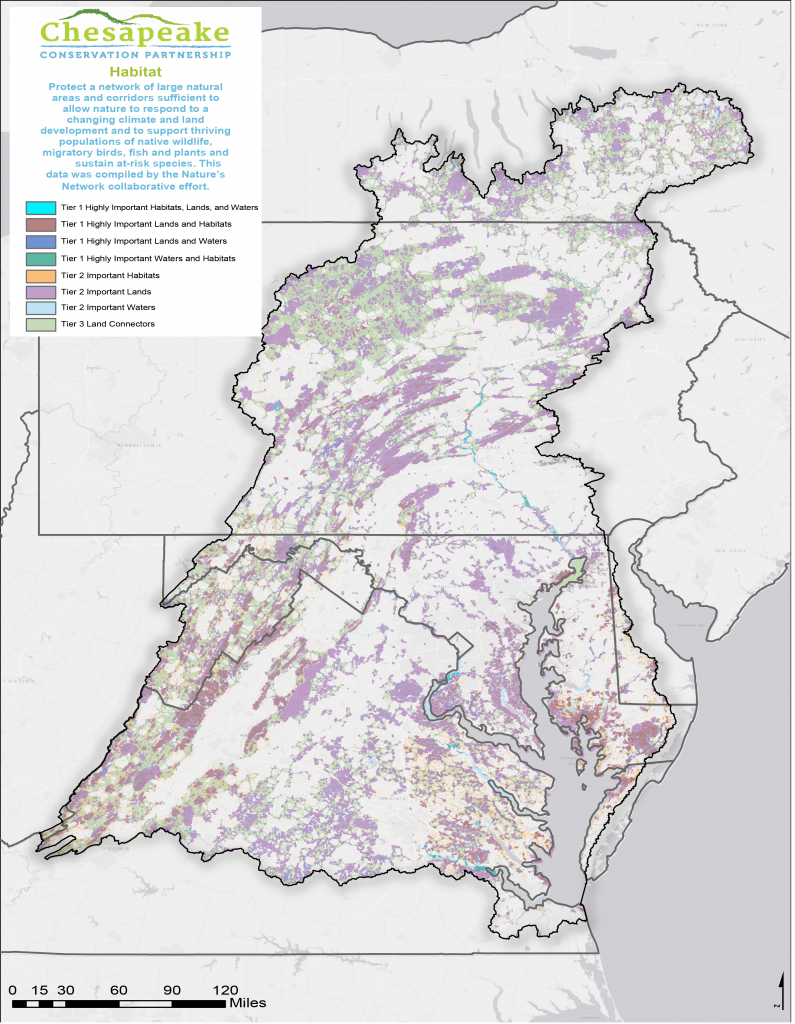Habitats
Our Goal
Protect a network of large natural areas and corridors sufficient to allow nature to respond to a changing climate and land development and to support thriving populations of native wildlife, migratory birds, fish and plants and sustain at-risk species.
The Chesapeake region is central to sustaining wildlife and fish on a vast scale. Hundreds of fish species use the Bay, rivers and headwater streams for some portion of their life cycles. Many – such as shad, striped bass, brook trout and more – hold tremendous ecological , commercial, recreational or cultural value. Hundreds of migratory bird species rely on the forests, wetlands and meadows of the watershed for food, resting spots or nesting. Millions of migrating ducks, geese and swans overwinter on the Chesapeake. Conserving the habitat that supports fish and wildlife is critical to sustaining a recreation, tourism, commercial uses, and a broader ecosystem.
CCP also works closely with the Chesapeake WILD initiative to help coordinate action towards habitat conservation. CCP helps coordinate the WILD Roundtable, which aids in providing direction and support for the WILD grants system and strategic direction in habitat conservation throughout the watershed under the five pillars of WILD.
Where We Stand
Our mapping identifies 18,045,776 acres of important habitat for conservation, about 44% of the Chesapeake watershed. Of this habitat, 6,115,252 acres (34%) of this habitat is already permanently conserved. We anticipate these numbers changing somewhat in the future as (a) higher resolution land cover data is put into use, and (b) we learn more about how climate change projections may affect habitat. Out of the large, unprotected parcels of land over 300 acres in size in the watershed, 1,756,576 acres (54.2%) are important habitats.
Note important habitat overlaps substantially with other conservation goals, particularly for forests and heritage.
Explore the web map here.

